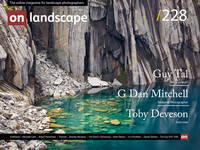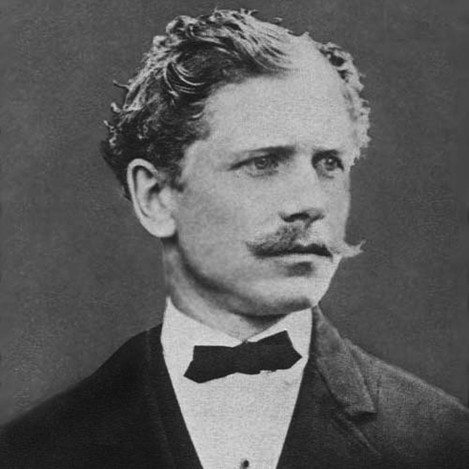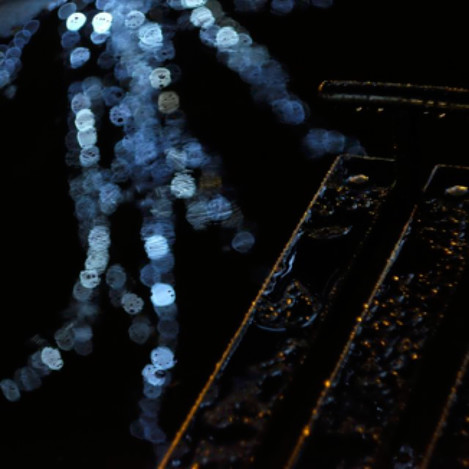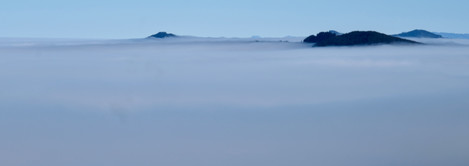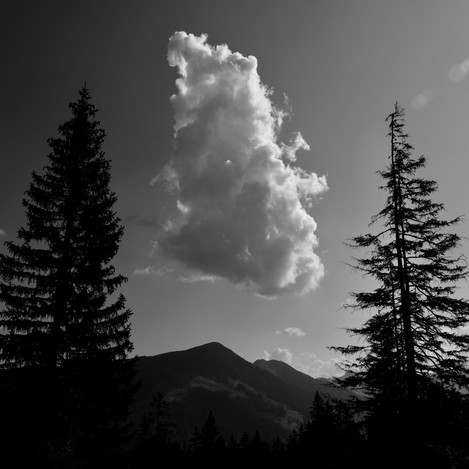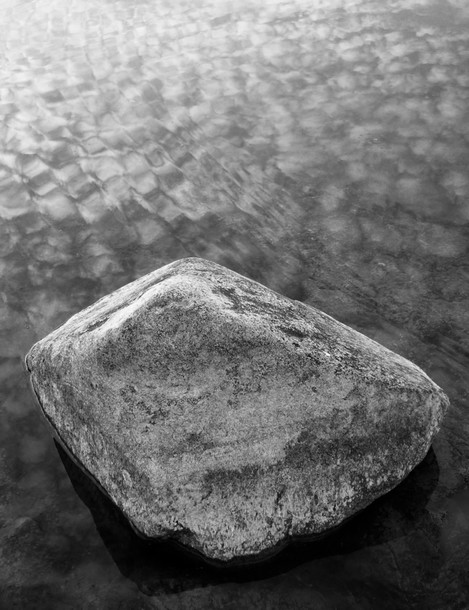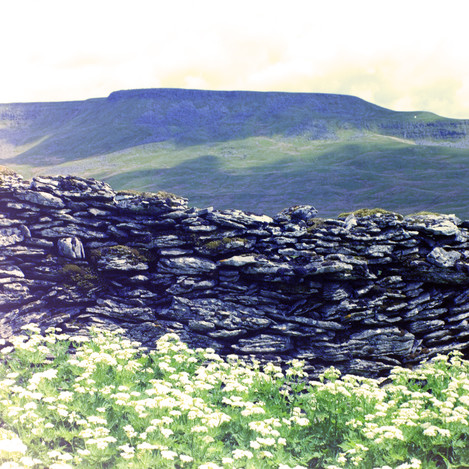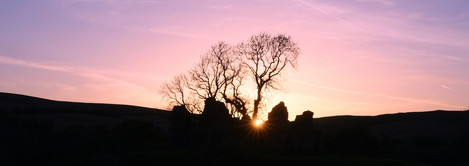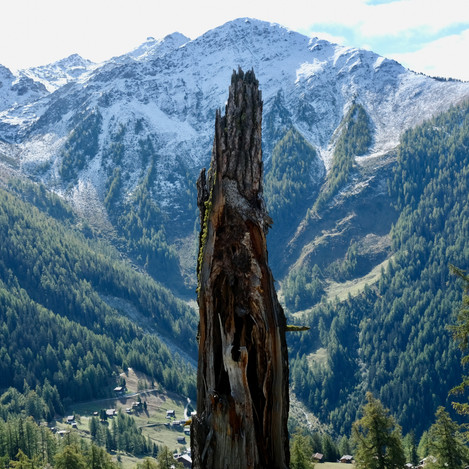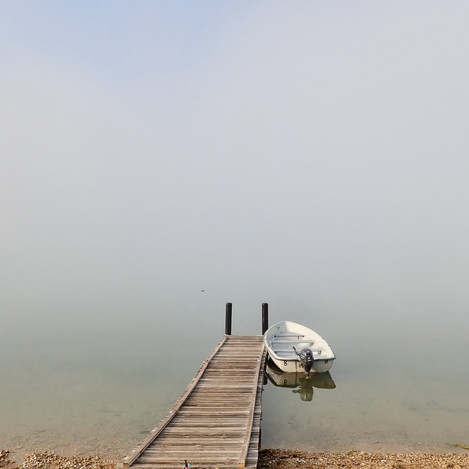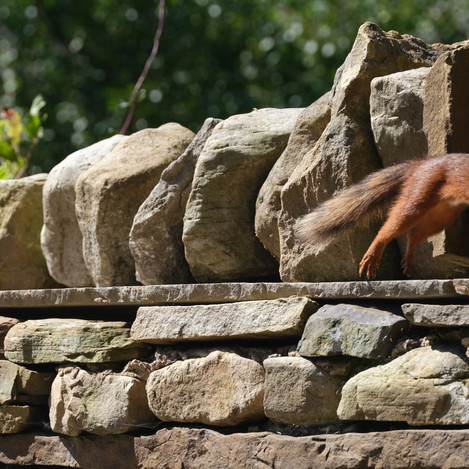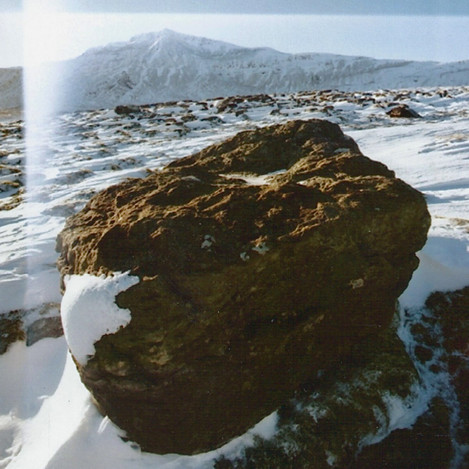A Cynic’s Wordbook of Photography

Keith Beven
Keith Beven is Emeritus Professor of Hydrology at Lancaster University where he has worked for over 30 years. He has published many academic papers and books on the study and computer modelling of hydrological processes. Since the 1990s he has used mostly 120 film cameras, from 6x6 to 6x17, and more recently Fuji X cameras when travelling light. He has recently produced a second book of images of water called “Panta Rhei – Everything Flows” in support of the charity WaterAid that can be ordered from his website.
Many of you will already know or will have heard of The Devil’s Dictionary by Ambrose Bierce which is often cited as one of the greatest satirical works of American literature. Bierce was an American writer and soldier and his satirical dictionary started life as a newspaper column, with the first definition appearing in 1867. The first column with The Devil’s Dictionary as title appeared in The Wasp in 18811. The first entry in that column has a particular resonance today (ACCURACY, n. A certain uninteresting quality carefully excluded from human statements).
The Dictionary first appeared in book form as The Cynic’s Word Book in 1906, with 521 definitions but only for the letters A to L. The full work was published as volume 7 in The Collected Works of Ambrose Bierce with his original title of The Devil’s Dictionary in 1911. Many of the definitions are enriched by citations and poems credited to different authors with wonderfully exotic names, all of them made up by Bierce. There have been numerous editions of the dictionary as a stand-alone volume since (including a fine Folio Editions volume with illustrations by Peter Forster)3. There have also been numerous translations and imitations4.
Just a few of my favourite Bierce definitions are
ABSURDITY, n. A statement or belief manifestly inconsistent with one's own opinion.
ADMIRAL, n. That part of a war-ship which does the talking while the figure-head does the thinking.
APPETITE, n. An instinct thoughtfully implanted by Providence as a solution to the labour question.
BIGOT, n. One who is obstinately and zealously attached to an opinion that you do not entertain.
CANNON, n. An instrument employed in the rectification of national boundaries.
DAY, n. A period of twenty-four hours, mostly misspent. This period is divided into two parts, the day proper and the night, or day improper—the former devoted to sins of business, the latter consecrated to the other sort. These two kinds of social activity overlap.
DEJEUNER, n. The breakfast of an American who has been in Paris. Variously pronounced.
DISTANCE, n. The only thing that the rich are willing for the poor to call theirs, and keep.
EGOTIST, n. A person of low taste, more interested in himself than in me.
And so on all the way to Z and (remembering that this was written at the end of the 19th Century) …
ZEUS, n. The chief of Grecian gods, adored by the Romans as Jupiter and by the modern Americans as God, Gold, Mob and Dog. Some explorers who have touched upon the shores of America, and one who professes to have penetrated a considerable distance to the interior, have thought that these four names stand for as many distinct deities, but in his monumental work on Surviving Faiths, Frumpp insists that the natives are monotheists, each having no other god than himself, whom he worships under many sacred names.
As is readily evident and by way of warning, Bierce was in no way politically correct and some of his definitions have not worn that well with time, including that for the photograph.
PHOTOGRAPH, n. A picture painted by the sun without instruction in art. It is a little better than the work of an Apache, but not quite as good as that of a Cheyenne.
That is the only mention of photography in The Devil’s Dictionary but clearly this is a subject area ripe for some clarifying definitions. I offer the following as a starting point5.
3-D pop [n]: The sickening noise made as the lens you were changing hits the ground.
45 [n]: Denotation used for some large format cameras and film. ALMOST the answer to life, the universe and everything for some photographers, but a little too big as not all the lenses they would like to use have sufficient coverage.
AA [n]: Help for monochrome photographers addicted to large format cameras, dark red filters and the smell of fixer.
Aberration [n]: What’s left of an image after the removal of distracting elements and sky replacement in Luminar or Photoshop.
APSC [n]: Acute Personality Split Camera; cannot decide whether to look down on all smaller formats of sensor or feel inferior to those with full frame sensors (see Full Frame)
Back-up [n]: An activity that you always intended to do before your PC failed (see Second Back-up).
Big Stopper [n]: A form of arrested development in photographic technique involving elimination of most detail.
Blue hour [n]: The period of swearing after finding that some essential element of gear has been left in the car several kilometres away.
Bokeh [n]: A result of using expensive lenses wide open to distract from an uninteresting main subject in an image (see also Swirly Bokeh).
Border [n]: The black lines added to a print to suggest that the image has not been cropped to cut out the unwanted elements included by poor framing (see Crop).
B-roll [n]: Video photographers’ name for a bacon butty.
Bulb setting [n]: mostly about 10cm deep and 10 cm apart.
Camera Club [n]: An embarrassment of judges very willing to criticise your latest work and give extensive and conflicting advice (see Judge).
Camera Collector [n]: A means of rapidly increasing prices on EBay after spreading rumours about the special character of a lens or the shutter sound of a vintage film camera (see Vintage, Rumours, Swirly Bokeh).
Camera shake [n]: Condition causing blurred images particularly common amongst the very young and very old (see ICM).
Chimping [n]: The sounds of disappointment made by photographers when reviewing their shots in camera.
Chromatic Aberration [n]: An aberration with additional drastic changes to white balance and colour wheels (see Aberration and Haze).
Circle of confusion [n]: Not really a circle (see Exposure Triangle).
Cloud [n]: (a) More than a cloud (see Equivalents); (b) A grey smear on an image taken with a Big Stopper; (c) (as in “The Cloud”) digital storage accounting for 2.5% of global carbon emissions and globally equivalent to 1.5 times total UK electricity consumption. Mostly used for storing selfies and images of cats, meals, and coffee mousse.
Coffee [n]: The ultimate film developer for hipsters, but requiring remarkable will-power to waste good coffee in such a way.
Composite image [n]: Technique of combining images dating back to the 19th Century and STILL not made illegal.
Covid [n]: A global pandemic disaster resulting in the sad loss of some excellent photographers, cancellation of nearly all workshops, postponement of the On Landscape Meeting of Minds, and far fewer airplane contrails to remove in Photoshop.
Crop [n]: The plentiful harvest of wasted paper after a print session.
Cyanotype [n]: Digital print made before realising that the other print cartridges were empty.
Dark Room [n]: A place of torture where photographers are sent to spend hours trying to produce the print they envisaged in taking the picture (see Digital Darkroom, Print).
Decisive Moment [n]: The best image selected from a contact sheet or (more recently) from a series of images taken in burst mode.
Daguerreotype [n]: an alternative photographic process of producing almost invisible images on metal plates; not to be confused with …
Deguerreotype [n]: A type of war of words between the English and French as to who invented proper photography.
Depth of Field [n]: The number of comments after a camera review in DPReviews.
Diffraction [n]: An on-line argument between supporters of 2 camera brands that becomes more intense as the differences between the cameras become smaller.
Digital Darkroom [n]: A form of torture resulting from software that has far too many controls and options producing prints that still do not match what is on screen even after buying expensive calibration tools (see Print).
Drone [n]: A really REALLY annoying noise coming from above, increasingly found in the most peaceful landscape locations.
Electronic shutter [n]: (pre-2005 cameras) a disaster waiting to happen to your outrageously expensive film camera (see Xpan); (post-2015 cameras) a way of introducing uncontrolled blur into images of moving subjects.
Equivalents [n]: Concept introduced by Alfred Stieglitz to justify taking 350 ambiguous images of clouds. More recently applied to stacks of bricks in the Tate Gallery and the emotions conveyed by images of mousse on cups of coffee (see Redundant).
Essence [n]: A characteristic of Edward Weston’s photographs of rocks. Analogous to Schrödinger’s Cat in that it provides an excellent excuse for endless discussions about whether it is there or not.6
To be a rock
or more than a rock
that is the question:
Whether it is nobler to
attract the photographer’s gaze
or suffer the indignity of
being overlooked as
just a rock; left to sleep
but perchance to dream of
fame on a gallery wall.
Or, is it enough
to just exist and
be left in peace to lie.
Exc+++++ [a]: Camera on EBay with just a few patches of leatherette missing and a few points of corrosion on the body (see Minty).
Exposure compensation [n]: Model fees depending on degree of undress.
Exposure to the Right [n]: Street photography to preserve the highlights of the American Presidential Election. May leave some murky shadow areas.
Exposure triangle [n]: A concept designed to create a circle of confusion when a photographer is brave enough to switch from Auto mode.
F64 Group [n]: A group of early 20th Century American photographers who succeeded in elevating cabbage into Art.
Film [n]: A support for images for which the colours were always a bit disappointing when the prints came back from Boots.
Film Simulations [n]: A digital means of reproducing the disappointing colours of various types of film.
Filter [n]: A means of adding defects to a perfectly good lens.
Flektogon [n]: An old Zeiss lens design that has recently become much more expensive because of its pretty zebra camouflage. Mostly used for collecting dust (see Camera Collector).
Fn Button [n]: Unlabelled camera function control. Impossible to remember what function it controls and often seems to produce a different result each time it is pressed.
Focus stacking [n]: A technique for spending even more time in front of a computer that could be spent taking images (see HDR).
Full Frame [n]: A sensor with an inflated self-perception of superiority that is hardly justified when still 4 times smaller than 6x6 and 60 times smaller than 10x8.
Gear Acquisition Syndrome (GAS) [n]: A condition common among photographers which results in spending all available hours reading reviews of cameras, lenses and all possible types of accessories on the internet. Appears to have been particularly contagious during 2020 lockdown (see Gear Head, Rumours).
There once was a gear head from York
Who was really a bit of a dork.
His GAS was so bad
He felt that he had
To declare himself NSFW.
Gear head [n]: A photographer infected with GAS; not to be confused with …
Geared Head [n]: My tripod supports something MUCH more expensive than yours.
Genesis [n]: The origins of the world and landscape photography. Somewhat after let there be really nice light and before the arrival of any colour.
Golden hour [n]: The period before sunset during which 95% of landscape photos entered into competitions are taken.
Graffiti [n]: A subject for monochrome images made famous by Brassai. More recently used to add elements of colour to street photography (but the painting takes much longer than the photo and may be illegal).
Grandagon [n]: Rodenstock lens for the more mature photographer.
When I grow old,
I will wear a photographer’s vest
and a fisherman’s hat,
and grow a beard,
and go large format.
With tripod and dark cloth,
and black and white film,
with standing development,
without agitation,
for the tone and textures,
of classic prints.
Though the pack is so heavy
to lift from the floor
and the tripod weighs something
like lead,
And scanning the negs is
a real pain in the A.
Perhaps I’ll go Leica
instead.
Hasselblad [n]: 哈苏
Haze [n]: The result of a global disaster of drought and fires in California, Oregon, Washington, Siberia, Paraguay and Brazil in 2020. No longer easily removed using the Clarity slider, but easily turned orange to impress.
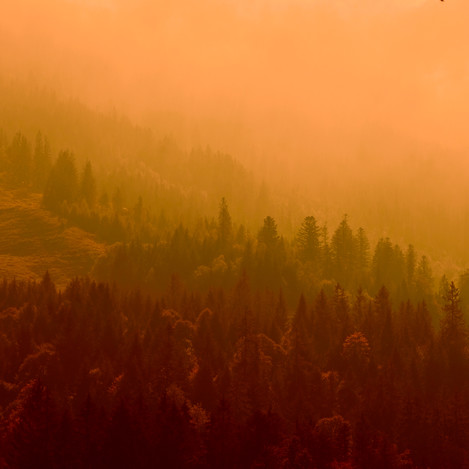
Haze near Flühli, Switzerland after arrival of smoke from California, September 2020 (after post-processing, see also Pre-Visualisation and Chromatic Aberration)
HDR [n]: Another technique for spending even more time in front of a computer that could be spent taking images (see Focus Stacking, ND Grad).
Histogram [n]: An option for obscuring the composition of an image in an electronic viewfinder.
Horizon [n]: As far as the eye can see during lockdown. Should not be placed right in the centre of the frame unless you are already famous. Probably best not placed vertically unless you are really very famous.
Hyperfocal distance [n]: Manic use of manual focus to check social distancing in post-Covid workshop groups.
Insurance [n]: That which you had the intention of buying before watching your tripod, camera and favourite lens topple slowly into a river (yes, it does happen).
Intentional camera movement (ICM) [n]: Post-hoc justification of a blurred image (see Camera Shake).
Image stabilisation [n]: A method of using extremely sophisticated mechanics and electronics to replace a simple camera support with 3 legs (see Tripod).
Jökulsárlón [n]: An unusual effect of the earth’s magnetic field in Iceland causing a particularly strong attractor of photographic workshop groups.
Judge [n]: (photographic) A person who has no idea what they are talking about.
Large Format [a]: Photographer with body mass index greater than 30.
Lens hoodie [n]: Required dress for street photography.
Long Exposure [n]: Sunburn consequent to having to wait for the Golden Hour.
Manual [n]: A guide to camera controls that has become increasingly incomprehensible with time. A small pamphlet of 8 pages in the age of film, now a book of hundreds of pages that requires buying an additional book of explanation (see Menu Option).
Megapixies [n pl.]: Source of the magic hidden in digital sensors, continually increased as a marketing ploy by camera companies. Can sometimes be detected as pixie dust at higher ISOs.
Menu Option [n]: A camera control that is impossible to find when you need it.
Metaphor [n]: A means by which photographers can encourage the viewer to take a closer look at an image by pretending there is a deeper meaning.7
Minimalism [n]: A fall-back when you really cannot find anything interesting to photograph.
Minimalism;
Already five syllables
Used in a haiku
Minty [a]: Camera on EBay with leatherette just starting to curl at the edges and a cloudy viewfinder.
Moi-ré [a]: A photographer who thinks it is all about him and his gear.
ND Grad [n]: A way to avoid spending too much time in front of the computer (see Filter, HDR).
Noise reduction [n]: Expensive high-tech headphones for use while waiting for some better light (see Golden Hour, Long Exposure).
Nude [n]: (a) A technique for ruining a perfectly good landscape photograph by adding an incongruous element (as in images by Edward Weston, Wynn Bullock, Jean-Loup Sieff); (b) landscape photography for studio photographers (see Exposure Compensation).
Original [a]: Art speak, as in “deeply original”; meaningless when applied to photographs.
Over-exposed [a]: Completely unclothed (see Exposure Compensation, Nude)
Petzval [n]: A 19th Century lens of simple design; revived in the 21st Century as an expensive way of getting blurry photos (or “velvety watercolour bokeh”) [see Bokeh].
Photography blogs [n]: On-line discussions of expensive hi-fi equipment, diet books, dogs, and existentialism.
Photoshop [n]: Digital dark room, complete with sink (of funds from a large number of photographers on a monthly basis) (see Digital Darkroom).
Physics [n]: (as in constrained by the laws of physics). Marketing ploy to justify the production of lenses that are ridiculously large and more and more expensive. Often cited in reviews of said lenses (see also Render).
Pictorialism [n]: Creating photographic Art by introducing blur and deep shadows. Now available as 2576 style files for less than $308.
Pinhole [n]: (a) a really annoying source of light leakage (but see Vintage); (b) an effective practical demonstration of the blurring effect of the physics of diffraction
Platinum Print [n]: A photograph that has sold a million copies (does not apply to single Andreas Gursky or Peter Lik photographs selling for more than a million pounds/euros/dollars).
Portfolio [n]: A collection of prints put together for other photographers to laugh at.
Powered by AI [a]: Changes decided by a computer that understands only 0s and 1s.
Pre-visualisation [n]: A justification of the use of extreme post-processing to rescue a poor image into something more acceptable.
Print [n]: A hard copy image, 99.5% of which are not quite right.
RAW [a]: files that are ripe for post-processing; should preferably not be over-cooked.
Reality [n]: philosophical concept; meaningless when applied to photographs
Redundant [a]: Another photograph of storm clouds clearing over Yosemite Falls from New Inspiration Point (or midday sun beams in Antelope Canyon, or sun rise at Mesa Arch, or sunset at Horsetail Falls, or the Wave at Coyote Buttes, or…. [add to personal taste])9.
Render [v]: (as in renders beautifully, 3D render) A marketing quality of a lens used to justify a very high price. Often cited in reviews of said lenses.
Resolution [n]: A marketing quality of a sensor that allows the photographer to produce prints that are far larger than they can ever afford to print and which is destroyed when the image is posted to Instagram.
Rule of Thirds [n]: A classification of images taken with a vintage rangefinder – one third out of focus (rangefinder alignment); one third over exposed (shutter running a bit slow); and one third taken with the lens cap inadvertently left on (see Vintage).
Rumours [n pl.]: (as in Canonrumours, Sonyrumours, Fujirumours, Nikonrumours, Leicarumours) an effective way of keeping gear heads occupied in between purchases of new cameras and lenses (see Gear Head).
Safe Light [n]: Safe light (see Golden Hour)
Saturation [n]: (as in over-saturation) A surfeit of Instagram sunsets.
Selfie [n]: A technique for ruining a perfectly good landscape photograph by putting a face (or faces) in front of it.
Second back-up [n]: An activity that you always intended to do before your networked hard disk failed.
Slow photography [n]: A project limited to one camera, one lens, one image per year and lots of Zen.
Pause a while and observe
The landscape and the light.
Pause a while and memorise
The play of wind and clouds.
Return again and pause to reflect
On the changes from before.
Finally, mount the camera,
Focus, tilt and shift,
Choose aperture and shutter speed,
Ready for the decisive moment.
Apart from the damn film holders,
Which were somehow left at home.
Pause a while and experience
The wondrous joy of Zen
In the Art of Slow Photography
Special edition [n]: It costs HOW MUCH???????
Sublime [a]: A way of increasing the appreciation of beauty in the landscape by looking through thousands of images on Flickr very very rapidly.
Subsidy [n]: List price contribution made by retired dentists and lawyers in support of Leica10.
Sunny 16 [n]: Method of perversely estimating exposure based on symbols printed inside an old Kodak film box rather than using a phone app.
Swirly Bokeh [n]: A result of using cheap Eastern European lenses wide open to distract from an uninteresting main subject in an image (see Bokeh, Petzval).
Tethered [a]: as in images by Nobuyoshi Araki; (see Zone System, extended)
Tilt/shift lens [n]: A very large lens for making people and cars look very very small.
Time Capsule [n]: A back-up that you always intended to do before your Mac failed (yes, it does happen) (see Second back-up).
Time Lapse [n]: The delay between exposing a film and getting it developed some months later (or not at all in the case of Garry Winogrand).
Tonal Gradation [n]: Fifty shades of grey. A much-valued property of monochrome film in nude photography (apparently) (see Over-exposed, Zone System).
Tripod [n]: A device used for manual image stabilisation, most likely to fail when close to water (see Insurance; Warranty).
Vignette [n]: That part of the animal remaining in the frame in a wildlife photo.
Vintage [a]: Camera or lens for hipster photographers embracing lens flare and light leaks as a way of being Arty.
Vlog [n]: Overlong video, mostly of opening boxes of new gear and photos of brick walls (see Gear Head).
Warranty [n]: A guarantee from the manufacturer that any benefits will expire from 1 to 10 days before the photographer has a malfunction or breakage.
Watermarked [n]: Inside of a lens after being retrieved from the river (see Insurance and Tripod).
Weather resistant [a]: Marketing speak for really REALLY not waterproof (see also Warranty and Watermarked).
White Balance [n]: An index of integration as the inverse percentage of white male ambassadors for each camera brand.
Workshop [n]: (photographic) (a) until recently, one of the few remaining ways to make some money for professional photographers (see Covid); (b) a successful way of dispersing original ideas to other photographers to ensure that all originality disappears.
Xpan [n]: A 35mm film Hasselblad made by Fuji that now costs more than when it was new (see Camera Collector); bought for future use as a paperweight (see Electronic Shutter).
Xtrans [n]: An alternative digital sensor; popular among gender fluid photographers.
Zeiss [n]: The god of optics in ancient mythology.
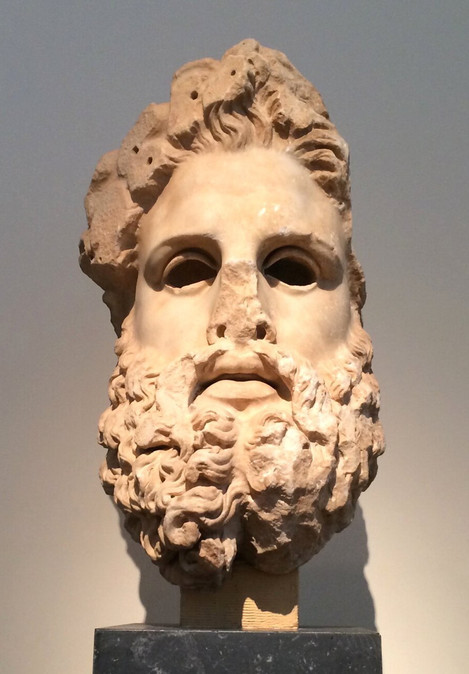
Zeiss, the God of Optics, represented in the form of a stereo camera (optics lost to ravages of time, unfortunately).
Zero-D [a]: An ultra-wide lens that only really rarely travels any distance from the shelf.
Zone System [n]: Concept for controlling monochrome exposures: originally 10 shades of grey (but which can be expanded to 50 for some improper purposes – see Tonal Gradation, Tethered, Over-exposed).
To finish with one last definition from Ambrose Bierce himself:
NONSENSE, n. The objections that are urged against this excellent dictionary.11
References
1 For a more complete history see the article on the Devil’s Dictionary in Wikipedia
2 From Wikipedia at https://en.wikipedia.org/wiki/Ambrose_Bierce
3 A full text of the Devil’s Dictionary can be found on-line as part of the Gutenberg Project
4 For a list see the Wikipedia article in footnote 1.
5 But after writing the list of definitions presented here I thought I had better check if it had been done before for photography. Indeed it has, by Roger Cicala the founder of Lens Rentals and by Jffield. Both have some really good definitions, but thankfully without too much overlap with the list above.
6 With apologies to Guy Tal, More than a Rock, Rocky Nook, 2013
7 With apologies to Joe Cornish in On Landscape Issue 216
8 With apologies to Andrew Sanderson in On Landscape Issue 218
9 See On Landscape "Landscape and the Philosophers of Photography"
10 With apologies to all retired dentists and lawyers who might have invested in Leica gear.
11 And apologies to anyone else who might have been offended at my wilful misuse of photographic terms.

